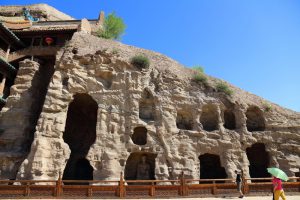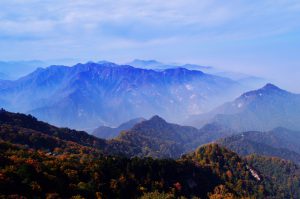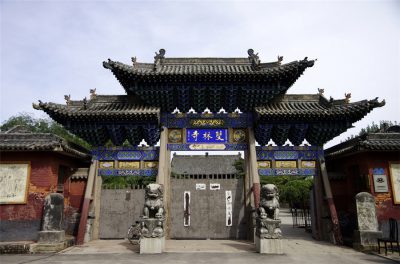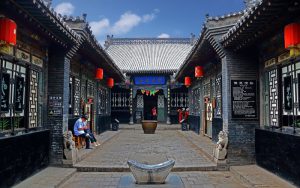
6 Days Shanxi Highlights Tour to Datong Wutaishan Taiyuan and Pingyao
Shanxi is a plateau province of North China. It is a region with more than 3,000 years history according to the written records. A place be regarded as the cradle of Chinese Civilization. Traveler will explore World Cultural Heritages, beautiful natural views and ancient Chinese histories during this trip.
Highlight
- Beautiful natural views of the largest grottoes in China, Yungang Grottoes
- Exciting trip to Hanging Temple
- Wutai Mountain, a holy land for kongfu in the traditional Kung fu novels
- City tour in the Ancient City of Pingyao, dicovery the life of ancient Chinese
- Explore Chinese ancient temples and experience the Culture of Buddhism
Brief Itinerary
- Day 1:Arrive in Datong
- Day 2:Datong-Wutai Mountain: Yungang Grottoes; Hanging Temple
- Day 3:Wutai Mountain-Taiyuan: Wutai mountain; the Twin Pagoda Temple
- Day 4:Taiyuan-Pingyao: Jinci Ancestral Temple; Chang Family Estate; Shuanglin Temple; Zhengguo Temple
- Day 5:Pingyao: the Ancient City of Pingyao
- Day 6:Depature Shanxi
Full Itinerary
Day 1:Arrive in Datong
Sightseeing and Activities:
Accommodation: Datong Hotel
Meals:Breakfast & lunch
Arrival at Datong Railway Station in the evening , you will be welcomed by our local guide and then transfer to hotel.
Day 2:Datong-Wutai Mountain
Sightseeing and Activities: Yungang Grottoes; Hanging Temple
Accommodation:Adjustable
Meals:Breakfast & lunch

After breakfast, you will drive to Yungang Grottoes. The grand Yungang Grottoes are located at the south cliff of the Wuzhou Mountain in the western suburbs of Datong City. Originally built in the Northern Wei Dynasty, they are generally reckoned to be one of the largest grottoes in China .The grottoes are chiseled along mountains and stretch continuously for as much as 1000 meters from east to west .There are 53 caves with 252 niches for over 51000 statues of varied sizes. In 2001, they were included on the World Heritage List by the UNESCO.
Then transfer to Hanging Temple. The Hanging Temple was built on the steep cliff hemmed in by a precipice on either side of the Cuiping Peak on the western Jinlong Gorge the foot of the Hengshan Mountain .The temple was built in the 15th year of the reign of the North Wei Emperor Taihe, and originally rose 90 meters above the ground , although now this has been reduced to only 58 meters due to years of salt building up on the rive bed . It is made of wood with a framework structure.
After Yungang Grottoes and the Hanging Temple, you will drive to Wutai mountain and check-in at the hotel.
Day 3:Wutai Mountain-Taiyuan
Sightseeing and Activities: Wutai mountain; the Twin Pagoda Temple
Accommodation:Yuyuan hotel
Meals:Breakfast & lunch

In the morning, you will visit the temples in the Wutai Mountain. The Wutai Mountain is located to the northeast of Xinzhou City, Shanxi Province. The average altitude is in excess of 1000 meters. The highest peak, Yemen Peak, has an elevation of 3058 meters above sea level, and is known as “the Roof of North China”. The Wutai Mountain is a combination of natural scenery, historic relics, ancient architecture, Buddhist culture, folk customs and a summer resort. As one of the four top Buddhist mountains, the Wutai Mountain was where the highly revered Manjushree Bodhisattva once performed the Buddhist rites. At present, there are 48 temples and hundreds of monks and nuns here. The Wutai Mountain is an art treasure of Chinese ancient architecture, sculpture and paintings. It is famous both at home and overseas of its relics, which are extremely old and of a great number.
After lunch, you will drive to Taiyuan and visit the Twin Pagoda Temple. The Twin Pagoda Temple is also called the Yongzuo Temple. Situated in the southeast of the downtown area of Taiyuan City, it was built in 1608, that is 36th year of the reign of Emperor Wanli of Ming Dynasty. It comprises the Sheli Pagoda and the Wenfeng Pagoda. As the highest building of all the existing ancient architecture in Tiauan City. It has become a significant landmark.
Then transfer to hotel and check-in.
Day 4:Taiyuan-Pingyao
Sightseeing and Activities: Jinci Ancestral Temple; Chang Family Estate; Shuanglin Temple; Zhengguo Temple
Accommodation:Hongshanyi Hotel
Meals:Breakfast & lunch

Today, you will drive to Jinci Ancestral Temple. The Jinci Ancestral temple, 25Km southwest away from downtown Taiyuan City , Shanxi Province , is located at the foot of Xuanweng Mountain . It was built to memorialize the first Duke of Jin State-Tang Shuyu in the Zhou Dynasty. Construction began during the Western Zhou Dynasty. It is the oldest and the most representative of its kind, it is the only example to combine ancient Chinese ancestral temple and garden arts .Its scenic spot composed of architecture, sculptures, and traditional landscaping.
Then visit Chang Family Estate. Located in Chewang Village, Dongyang Town, the southwest part of Yuci District, the Chang Family Estate is architecturally representative of China’s intellectual merchants. Featuring both the power of the courtyard architecture of north China and the delicate beauty of southern garden constructions, the estate is a combination of buildings, platforms, corridors, pavilions and pagodas. It was first built in the late Ming Dynasty and the early Qing Dynasty.
Continue to Shuanglin Temple and Zhengguo Temple. Shuanglin Temple is located in Qiaotou Village, 6Km southwest of the ancient city of Pingyao. As a key cultural relic under state protection, it was added to the World Heritage List by the UNESCO in 1997. The temple houses a collection of priceless art treasure, such as the Chinese scholar tree dating back to the Tang Dynasty, bells cast in the Ming Dynasty, and various painted sculptures and examples of ancient architecture .
The Zhenguo Temple is situated 15Km northeast of Pingyao, the ancient city. It is one of the two temples connected with Pingyao that has been included on the world cultural heritage list. It was first built in 963. Its major architectural features include the Tianwang hall, the Drum Tower, the 10000 Buddha Hall and the Guanyin Hall.
In the evening, you will arrive at Ancient City of Pingyao and check-in at the hotel.
Day 5:Pingyao
Sightseeing and Activities: the Ancient City of Pingyao
Accommodation: Hongshanyi Hotel
Meals:Breakfast & lunch

Today, you will take a walk in the Ancient City of Pingyao. Pingyao, is located to the southwest of Taiyuan in central Shanxi. Known for its history and culture, it was added to the World Heritage List by the UNESCO in 1997. The World Heritage Committee recognizes it as the most intact best-preserved ancient county seat in China and an outstanding example of the cities of Han ethic group during the Ming and Qing Dynasties. It has a history of over 2700 years, up to this day, its city walls, streets, civilian residential houses, shops and temples still maintain the basic styles and features of the Ming and Qing Dynasties.
Day 6:Depature Shanxi
Sightseeing and Activities:
Accommodation:
Meals:
Check-out and transfer from Pingyao to Airport in Taiyuan
Service included
- Meal as listed in the itinerary.
- Air-conditioned vehicle.
- Entrance fees as specified in the itinerary.
- English-speaking tour guide service.
- Accommodations: Adjustable
Service excluded
- Airfare, tax and fuel surcharge.
- Tiping to guide and driver.
- Personal expenses.
- The electrinic car & cable car.
- The other tickets in the spots that we didn’t mentioned.
Note:
The quotation is different for China Public Holidays. For instance, Chinese Spring Festival,Tomb-sweeping Festival, Labor Day, Dragon-boat Festival, Mid-autumn Festival, China National Day, etc.
















